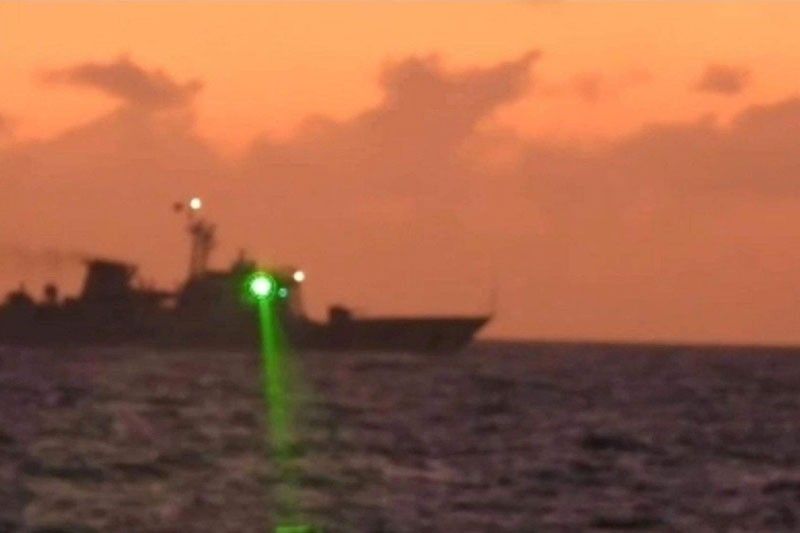Addressing China’s gray zone operations in WPS: Role of Civil Maritime Security Agency

In early 2021, while the Duterte administration was focused on managing the raging COVID-19 pandemic, a Chinese gray zone operation forced its focus away from its pandemic response and toward China’s undeniable expansion in the South China.
The National Task Force on the West Philippine Sea (NTF-WPS) called the country’s attention to 220 Chinese fishing boats in Whitsun Reef, 170 nautical miles from the westernmost island of Palawan, from March to May 2021. The Philippine Coast Guard (PCG) first sighted and reported the presence of the 220 fishing vessels, allegedly manned by the Chinese maritime militia, as early as March 7.
The Philippines’ Department of National Defense (DND) claimed that these fishing boats were crewed by Chinese maritime militia allegedly sheltering from bad weather. Satellite photos also revealed that ships were devoid of any fishing equipment.
On March 28, 2021, former Defense Secretary Delfin Lorenzana ordered an increase in sovereignty patrols in reaction to the amassed Chinese vessels deep inside the Philippines’ exclusive economic zone. He instructed the Philippine Navy (PN) and PCGs to deploy their American- and Japanese-made ships to conduct sovereignty patrols near Whitsun Reef.
The PCG activated its “Task Force Pagsasanay (Training)” to intensify the capacity building of its personnel and assets to show that it can secure the Philippines’ exclusive economic zone (EEZ) amid the heightened tension with China. The task force comprised officers and crew of the PCG’s newly acquired Japanese-made MRRVs.
The PCG also deployed all-female coast guard radio operators on board its patrol ships to warn Chinese vessels that they were within the Philippines’ EEZ and were thus requested to provide the vessel’s name, intention, and last and next port of call.
The NTF-WPS also announced the formation of a nonmilitary patrol comprising ships from the PCG, the Bureau of Fisheries and Aquatic Resources (BFAR), and the Philippine National Police Maritime Group (PNP-MG) in the disputed waters for law enforcement operations, monitoring, and ensuring the safety of Filipino fishermen and the environment. These civilian agencies deployed eight vessels, including the PCG’s most advanced patrol ship, the BRP Gabriela Silang.
In late April 2021, this joint patrol was sent to the Spratly Islands and Scarborough Shoal, where they conducted their first-ever comprehensive maritime exercises. The creation of this nonmilitary/naval patrol was also aimed to complement the PN ships already operating near Whitsun Reef.
During the height of the Whitsun Shoal stand-off, the PCG, as a civilian maritime agency, played the role of the primary enforcer of Philippine naval interests in the South China Sea. This was because past Philippine presidents considered the PCG the appropriate national policy instrument in addressing Chinese gray zone operations in the South China Sea.
Addressing China’s gray zone operations
Gray zone operations are China’s method of an integrated maritime campaign aimed to influence the maritime Southeast Asian states by undermining the legitimacy of their claims in the South China Sea without resorting to armed conflict.
The Japanese National Institute of Defense Studies (NIDS) observed that China has relied on the People’s Liberation Army’s Navy (PLAN), the Chinese Coast Guard (CCG), and the Chinese Maritime Militia (CMM) to assert its maritime rights and interests after it created artificial islands in the South China Sea in the mid-2010. Operating from these outposts, CCG crackdowns on fisherfolks from the Southeast Asian littoral states, while the CMM intimidates these states’ navies and coast guards through its swarm tactics.
President Ferdinand “Bongbong” Marcos Jr. was inclined to foster a closer economic relationship with China, hoping this emergent economic powerhouse would help the Philippines recover from the recession brought by the coronavirus pandemic and his predecessor’s drastic lockdown that adversely affected the consumer-driven Philippine economy.
Keenly aware of the Philippines’ need for massive public investment to finance its major infrastructure-building program, China offered economic assistance without compromising its territorial dispute with the Philippines in the South China Sea. Chinese gray zone operations against the Philippines remained unabated, despite President Marcos’s efforts to foster extensive economic ties with China.
In November 2022, a CCG ship seized rocket debris from a Chinese rocket launcher found and towed by a PN ship near waters around the Philippine-occupied Thitu Island. The following month, a large CCG ship blocked and harassed a small PN supply ship on its way to deliver supplies to the small Philippine garrison on the BRP Sierra Madre on Ayungin Shoal.
A swarm of CMM boats menacingly approached Filipino vessels near Iroquois Reef and Shabina Shoal in the Spratlys. In February 2023, a CCG ship directed a military-grade laser at a PCG patrol boat, escorting a PN resupply mission for its naval personnel on board the BRP Sierra Madre on Ayungin Shoal.
Marcos’ calls to arms
In a speech in front of its personnel in Malacañang Palace, President Marcos called on the PCG to continue protecting the country’s maritime territory. He cited how recent developments in the South China Sea have made their mission more intense compared to the previous years.
Marcos recognized the PCG’s original role in ensuring maritime safety. He described the PCG personnel as front liners ready to confront threats from the country’s coastlines. Buoyed by Marcos’ directive, the PCG leadership directed its personnel and ships to safeguard the Philippines’ exclusive economic zone (EEZ) and protect Filipino fisherfolks from harassment by the CCG and CMM.
The current initiatives in the West Philippine Sea are in line with Marcos’ more critical and challenging task of ensuring “that no square inch of Philippine territory will be surrendered to any foreign power.” Indeed, the security challenges confronted in the country’s maritime territory further predicates the need for cooperation among government, military, and civil maritime agencies as well as with like-minded states to counter gray zone operations.
Renato Cruz De Castro is trustee and program convenor of think tank Stratbase Institute.
- Latest



























